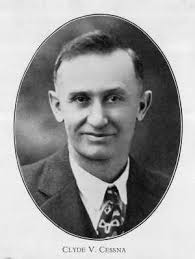Several readers have emailed me personally, asking that, through this blog, I keep them informed of my cancer treatment and general health. I suspect that these requests come from a genuine desire to know, from people who I know really care, but I don’t think I can find it in myself to do what they are asking.
Although I try to sprinkle the posts in this blog with personal anecdotes, it has never really been about me. The majority of the readers of this blog don’t know me personally, so why should they care? If I felt as though my trials through this treatment, wherever they take me, would be truly helpful for someone else, perhaps that would be a different story.
I continue to work on the blog when and as I am able because to some degree it serves as a distraction. The root ideas for each post were ideas that came to me a while ago, before this illness, and most of the posts that you will be seeing are simply a matter of editing things I had started in the past. The simple fact is that many of the readers have told me they enjoy what I do, and I suspect that has something to do with the fact that I enjoy writing the posts. I have been told that throughout the ordeal of chemotherapy and radiation, I should try to do things of which I am capable and that bring me pleasure. So, in that sense, writing this blog when I am able is a form of therapy.
And also, frankly, describing the details of my treatment and particularly my response to treatment can be gruesome and depressing. I am fighting falling into a deep pit of depression and despair every moment, and I don’t want to broadcast that. I am also ashamed that I feel that I am not better able to handle the situation, or at least haven’t found a decent path through what has been a terrifying wilderness for me, constantly struggling and often losing the battle against feelings of sheer panic and terror. I struggle mightily to find my “pilot in command,” but he hasn’t shown up too often. Those are the bad hours, but there are some good hours too, and hopeful I will be able, over time, to increase the ratio of good hours to bad.
So, as is typical of me, I just did what I started out saying I would not do, but I wanted to respond to those who requested updates on my health. If you know me personally, email me directly and I will put you on a list that a good friend has been using to circulate updates for me. Clearly, whatever the outcome, it is going to be a long haul, so in the interim I hope you can find some pleasure in the posts that follow.



 If I were born with the name Clyde Cessna, I might consider naming my airplane a Cessna. Works a lot better than calling it a Clyde. If I were named Walter Beech, I might choose a name such as “Beechcraft” for my wings. William Boeing did fairly well naming an aircraft company after himself, as did Howard Hughes, James McDonnell and Donald Douglas, and a few others.
If I were born with the name Clyde Cessna, I might consider naming my airplane a Cessna. Works a lot better than calling it a Clyde. If I were named Walter Beech, I might choose a name such as “Beechcraft” for my wings. William Boeing did fairly well naming an aircraft company after himself, as did Howard Hughes, James McDonnell and Donald Douglas, and a few others. My yoga instructor, Charles DeFay, is a kind, well-intentioned man, who is undoubtedly sincere in his beliefs, despite delivering his instructions a bit like a drill sergeant on Ritalin. He repeats the same phrases along with the asanas (the positions) in each session; sometimes the phrases serve as punctuation, but just like the asanas, they are always the same.
My yoga instructor, Charles DeFay, is a kind, well-intentioned man, who is undoubtedly sincere in his beliefs, despite delivering his instructions a bit like a drill sergeant on Ritalin. He repeats the same phrases along with the asanas (the positions) in each session; sometimes the phrases serve as punctuation, but just like the asanas, they are always the same.

